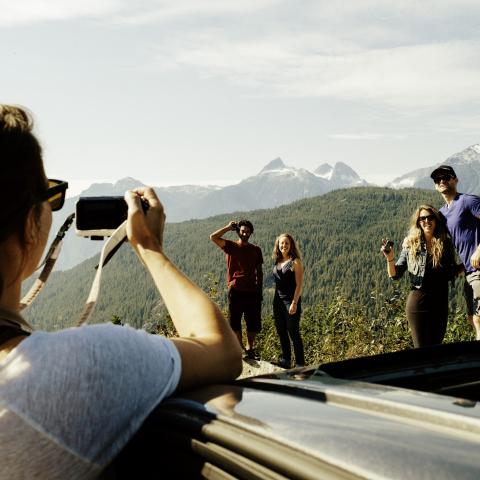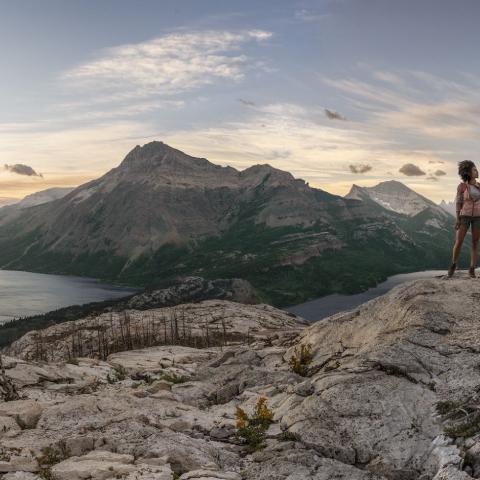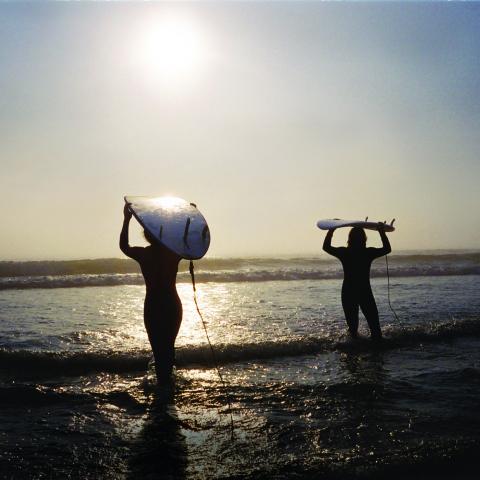Author: Leslie Anthony
British Columbia is an enormous, strikingly mountainous place. In fact, to arrive by road at its geographical centre requires a 10-hour drive from Vancouver across several mountain ranges and climatic zones. But here’s a more telling metric: if you dropped B.C. over the mountainous spine of the western U.S. it would cover some or all of Idaho, Montana, Wyoming, Utah, Colorado, Arizona and New Mexico. Conjure the scope of ski experiences represented by those states—the structure and thrust of mountains, varied forests and alpine environments, local peculiarities of snow and cultural ambiance—and you get an idea of the diversity of B.C.’s ski offerings. Basically, there’s more to discover than one can imagine.
If the misused trope of “B.C. skiing” is far from a one-dimensional affair, it at least reflects two commonalities: plenty of snow and plenty of space. The former is what makes skiing in the province Instagram-worthy, but it’s the latter that defines it. Even “small” B.C. resorts are large enough for skiers to spread out and explore. Better still, B.C. ski areas tend to reflect their wilderness settings in-bounds—healthy doses of the same postcard surroundings that provide for other activities like backcountry ski-touring, Nordic skiing, snowshoeing, dog-sledding, fat-biking, zip-lining, ice-fishing and, well, how about a unique kilometre-long ice-skating loop through scenic forest like the one at Apex Mountain Resort? And then there’s Whistler Blackcomb, a coastal colossus that perennially lands as one of the top ten most-visited ski resorts in the world but which always has room to roam. Even during a holiday crunch, once you’re up the mountain you can drop any crowd in an instant; entire civilizations could be hidden in Whistler Blackcomb’s 8,000-plus acres, one of the few places where hyperbole can’t live up to reality. (After living here 20 years I can still go out on any given day and find myself skiing something I’ve never seen before.)
But as surely as space is a physical thing, it’s also a state of mind. As when certain attributes create a sense of space—like views. Off Whistler Blackcomb, it’s the looming glaciers and volcanoes of Garibaldi Provincial Park, from Kicking Horse Mountain Resort the voluminous Rocky Mountain Trench, and from Vancouver Island’s Mt. Washington Alpine Resort, well, everything; whether you’re gazing west to the rugged peaks of the Forbidden Plateau or east across the Salish Sea to the Coast Mountains, the only way to have a ski area closer to the ocean would be if it rose directly from the water.
Space is also aided by topography—the more complex the better. Sun Peaks, the province’s second largest ski area, is spread across three unique faces: Mount Tod, Sundance Mountain and Mount Morrisey. Fernie Alpine Resort boasts five alpine bowls. RED Mountain Resort famously offers 360-degree skiing off Granite Peak. And, as the highest peak between the Okanagan Valley and Monashee Mountains, Big White is practically its own mountain range.
And then there’s the alpine environment. Skiing in B.C., I often find myself ducking into towering white spires of hemlock and spruce that grow in that pointed, perfect, mountain way. Clad as they are in sound-absorbing splendor, these “snow tree” sentinels bring solace and sanctuary to the winter landscape. Snow trees are a hallmark of SilverStar Mountain Resort. On a recent visit, powder was everywhere on the frontside Vance Creek area, yet people were not. In fact, more seemed interested in a morning cross-country skate than jumping onto lifts to enjoy untracked bliss. Trying to keep ahead of a non-existent crowd I’d headed directly to the backside Putnam Creek area, a steep and, on that day, genuinely deep black-diamond playground of ridges, gullies and glades where there was just me… and the snow trees.
I have a pocketful of similar space-tales from my time skiing across B.C. At Kicking Horse once, sun and perfect snow were taking the edge off a bitter cold January day—but so were the empty pistes, chutes, and bowls. I spent the morning traversing CPR and Redemption Ridges, dropping line after line into Crystal Bowl wondering where the skiers were. As the sun moved, I followed it into Feuz Bowl and then onward to Terminator Peak before dropping into a virtually empty Super Bowl for a long run back to the bottom. Both hotels and hill were “full,” yet skiing remained wide open and uncrowded. Even on its busiest day Kicking Horse might see 3,000 souls, mercifully spread out by the sheer range of on-mountain options.
Things were pretty much the same on a visit to Panorama Mountain Resort—hotels full but the humans well scattered. The lifts were all ski-on despite excellent conditions, delivering 3,000-vertical-foot descents of perfect corduroy, a charmed experience where I knew I could go in for an on-mountain lunch at any time without worrying over crowds. At RED Mountain Resort, I encountered the same—on a Saturday no less. Untracked snow, no lift-lines, and Grey, a mountain adjacent to the main peak of Granite, with only a dozen people cycling its lift. This, I found out, is by design: RED’s management looks to maintain the biggest space-to-skier ratio in the industry, around 2 acres per skier on its busiest days. That’s inspired thinking.
Also inspired is the concept of cultural space, on display everywhere, whether in the international diversity of Whistler’s 100 bars and restaurants, the idea of pairing a winter wine tour with skiing Okanagan resorts, or the huge range of craft breweries, funky eateries and events in every ski town.
Finally, B.C. is famous in skiing circles for its Powder Highway, a grand circle route linking the resorts of RED, Whitewater, Fernie, Kimberley, Panorama, Kicking Horse and Revelstoke—as well as the continent’s greatest concentration of heli-skiing, cat-skiing, and backcountry ski lodges. But for those who truly enjoy asphalt with their snow, B.C. actually has a second powder path—the “North by Northwest.” This remote route takes adventurous skiers to Quesnel’s Troll Resort (its throwback log baselodge comes complete with upright piano and fireplace), Hudson Bay Mountain in Smithers (stunning scenery and great fall-line groomers), Shames Mountain outside Terrace (470 inches annual snowfall and North America’s best backcountry), and Powder King Mountain Resort near Prince George (huge snow in a wild setting).
With its great diversity, B.C. skiing instils a sense of discovery and exploration that spills over into the quotidian rhythms of people’s lives. Space may be the final frontier, but with British Columbians being adventurers by design, it’s a frontier they’re happy to share.

Discover British Columbia
Where the Pacific is met by bustling city, towering forest and rugged mountain. Visit Hello BC









